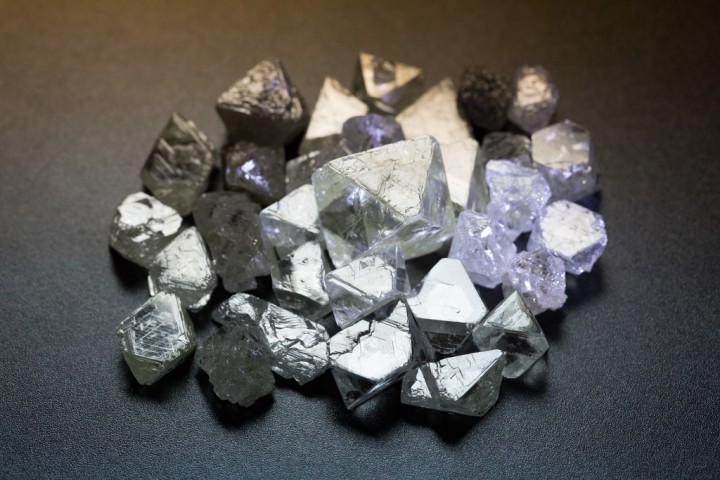Investing in the diamond industry has always been an intriguing prospect, with its allure of luxury, rarity, and high value. However, a new player has emerged in recent years that is revolutionizing the market – lab-grown diamonds.
These diamonds, created through advanced technology in controlled laboratory environments, are gaining popularity for their ethical and environmental advantages.
In this article, we will explore the world of publicly traded lab-grown diamond companies and delve into their financial performance and growth potential. We will also compare them to natural diamond miners and discuss the investment opportunities that lie within the lab-grown diamond industry.
So let’s dive in and discover how these innovative companies are changing the landscape of investing.
Introduction to Lab-Grown Diamonds
Lab-grown diamonds, also known as synthetic or cultured diamonds, are man-made gems created using advanced technology. These diamonds replicate the conditions under which natural diamonds are formed deep within the Earth’s mantle.
Through innovative processes such as High Pressure High Temperature (HPHT) and Chemical Vapor Deposition (CVD), scientists can grow lab-grown diamonds with identical physical and chemical properties to their natural counterparts.
Lab-grown diamonds offer several advantages over mined diamonds. They have a significantly lower environmental impact as they eliminate the need for large-scale mining operations. Additionally, lab-grown diamonds are free from ethical concerns such as child labor or unethical mining practices often associated with natural diamond mining.
Advantages of Lab-Grown Diamonds
Lab-grown diamonds offer numerous advantages, both from an environmental and ethical standpoint. These benefits make them an appealing alternative to traditionally mined diamonds.
Traditional diamond mining practices have long been associated with significant environmental consequences. Deforestation, habitat destruction, water pollution, and carbon emissions are just a few of the negative impacts caused by mining operations. In contrast, lab-grown diamonds leave a minimal ecological footprint.
The production process for these diamonds requires less energy and water compared to the extraction of natural diamonds. By opting for lab-grown diamonds, consumers can contribute to the preservation of precious ecosystems and reduce their carbon footprint.
A major concern surrounding natural diamond mining is the issue of conflict or blood diamonds. These diamonds are sourced from regions associated with human rights abuses or funding armed conflicts. Lab-grown diamonds provide a transparent and ethical alternative in this regard.
Unlike natural diamonds whose origin may be difficult to trace, lab-grown diamonds can be easily tracked and verified. This transparency ensures that consumers can confidently choose jewelry that aligns with their values and supports responsible sourcing practices.
The advantages of lab-grown diamonds extend beyond their environmental and ethical aspects. These man-made gems also offer consistent quality, as they are created under controlled laboratory conditions using advanced technology.
Additionally, lab-grown diamonds often come at a more affordable price point than their natural counterparts, allowing individuals to own a stunning piece of jewelry without breaking the bank.
Overview of the Lab-Grown Diamond Industry
The lab-grown diamond industry has seen rapid growth in recent years due to increasing consumer demand for sustainable and ethically sourced products. Lab-grown diamonds offer an environmentally friendly alternative to traditional diamond mining, addressing concerns about harmful practices.
Additionally, these diamonds provide peace of mind with their transparent sourcing and traceability. They are becoming popular among a wide range of consumers due to their affordability and consistent supply.
Key players in this industry, such as Company A, Company B, and Company C, invest in research and development to produce high-quality lab-grown diamonds that rival natural ones. The future looks promising for this industry as it continues to meet consumer needs and expand its market presence.
Financial Performance and Growth Potential
Analyzing the financial performance of publicly traded lab-grown diamond companies provides valuable insights into their past achievements and future prospects.
Company A
Company A has been a pioneer in the industry, continuously improving their technology to produce high-quality diamonds that are indistinguishable from natural ones.
Company B
With a commitment to sustainability and innovation, Company B uses cutting-edge manufacturing processes to produce large quantities of high-quality diamonds at competitive prices.
Company C
Known for exceptional craftsmanship and attention to detail, Company C’s diamonds are renowned for their brilliance and beauty, making them a sought-after choice among consumers.
By considering the historical financial data of these companies, investors can make informed decisions about their growth potential in this burgeoning industry.
Comparison Between Publicly Traded Lab-Grown Diamond Companies and Natural Diamond Miners
In comparing publicly traded lab-grown diamond companies with natural diamond miners, several differentiating factors emerge. These factors shed light on the advancements made by lab-grown diamond companies and highlight the environmental impact of both industries.
One significant aspect to consider is the technological advancements achieved by lab-grown diamond companies. These companies have dedicated substantial resources to research and development, resulting in remarkable technological progress.
As a result, they have increased production efficiency, enhanced quality control measures, and perfected the ability to create larger diamonds with consistent color and clarity. These developments have revolutionized the market for lab-grown diamonds, offering consumers a viable alternative to natural diamonds.
The environmental impact is another crucial aspect when comparing these two sectors. Natural diamond mining has long been associated with numerous environmental issues. It contributes to land degradation through extensive excavation activities, disrupts ecosystems, and poses threats to wildlife habitats.
Additionally, water pollution from mining operations further exacerbates the environmental impact. In contrast, lab-grown diamonds have a significantly smaller environmental footprint. The production process requires fewer resources and does not contribute to habitat destruction or water contamination.
This makes lab-grown diamonds more environmentally sustainable compared to their natural counterparts.
Financial analysis also plays a role in assessing these industries’ differences but should be examined in more detail separately. Comparing publicly traded lab-grown diamond companies and natural diamond miners requires an evaluation of various financial aspects such as revenues, profit margins, market capitalization, and investor sentiment.
Overall, analyzing the comparison between publicly traded lab-grown diamond companies and natural diamond miners brings attention to the technological advancements driving the growth of lab-grown diamonds while highlighting their more sustainable environmental impact compared to traditional mining practices.
Understanding these key differences is essential for investors and consumers alike as they navigate an evolving market for diamonds.
Investment Opportunities in the Lab-Grown Diamond Industry
The lab-grown diamond industry offers promising investment opportunities. With increasing consumer demand for sustainable alternatives, the market is expected to grow significantly. By investing in publicly traded lab-grown diamond companies, investors can potentially reap substantial returns.
To evaluate investment opportunities, it is crucial to assess each company’s competitive advantages. Factors like technology leadership, brand reputation, distribution networks, and product differentiation play a vital role in long-term success.
Technology leadership ensures consistent quality and efficient production processes. Brand reputation builds trust and stability in emerging markets. Well-established distribution channels provide greater market access and higher sales volumes. Product differentiation attracts discerning consumers who value exclusivity and personalization.
In summary, analyzing these factors helps identify promising lab-grown diamond investments. Market growth projections coupled with competitive advantages make this industry an attractive choice for investors seeking financial gains.
Future Outlook for Lab-Grown Diamond Companies
Continuous innovation in laboratory processes, including larger-scale production facilities and advanced cutting techniques, will drive improvements in the quality and production efficiency of lab-grown diamonds. As sustainability becomes more important to consumers, lab-grown diamonds are poised to gain market share.
This shift in consumer preferences, combined with technological advancements, indicates a bright future for the lab-grown diamond industry. These environmentally friendly and cost-effective alternatives offer transparency and eliminate concerns related to conflict or blood diamonds.
With increasing awareness and demand, lab-grown diamond companies have significant growth opportunities in the jewelry market.
Making Informed Investment Decisions in the Lab-Grown Diamond Industry
Investing in publicly traded lab-grown diamond companies allows for participation in a sustainable and ethical industry. By analyzing financial performance, competitive advantages, and market projections, investors can make informed decisions that align with their goals.
With increasing demand for sustainable alternatives and continuous innovation, these companies are well-positioned to thrive. Explore the possibilities and be at the forefront of this exciting industry.
[lyte id=’EjHS9CpGPVc’]







